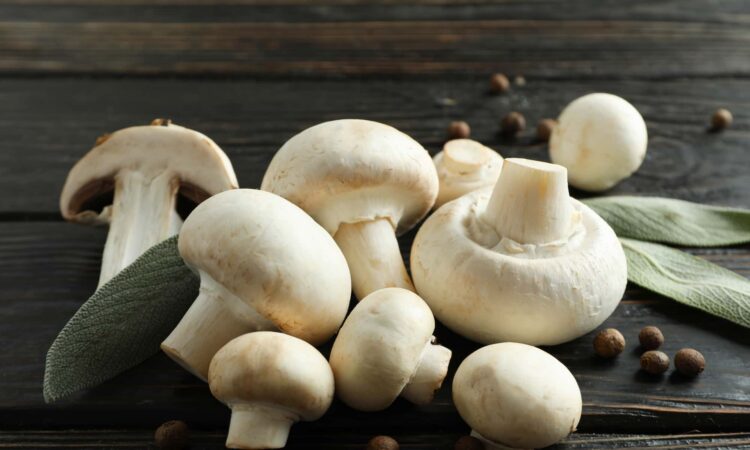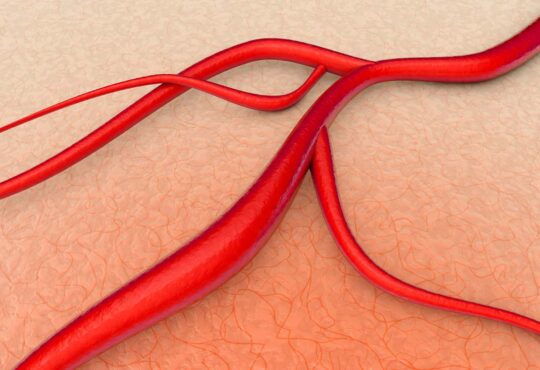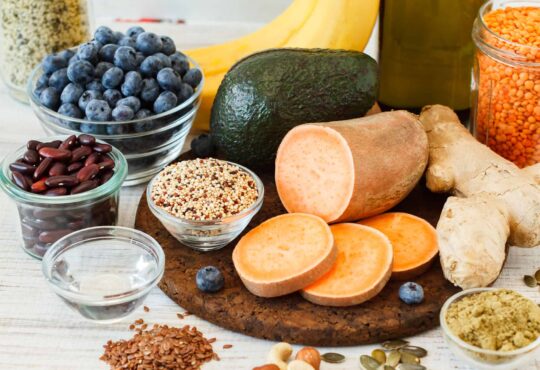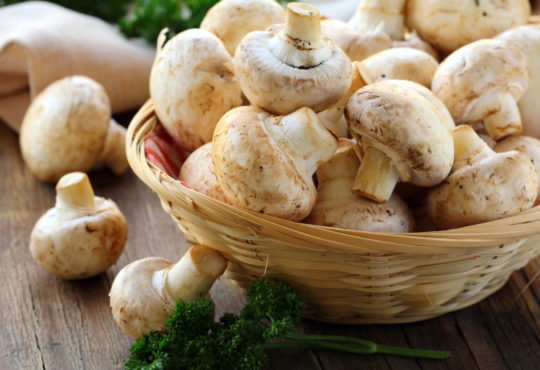
That includes the simple white mushrooms on your pizza.
You don’t need to try to grow exotic Asian mushrooms in your basement or search for rare species such as shitake and maitake in tiny shops in your nearest “Chinatown.”
You don’t have to risk your life by picking wild mushrooms without knowing the harmless ones from the poisonous ones.
No, they’re widely available in every supermarket: simple white button mushrooms (A. bisporus). Raw or canned.
This new vitamin is similar to Vitamin C. Despite its biological importance, our bodies can’t make it. We rely on getting it through our diet.
Does this indicate it’s not really important? Or that – like Vitamin C – we used to eat so much of it, making our own was a waste of bioresources?
After a Century, We’re Finally Uncovering Its Secrets
L-ergothioneine is a derivative of the amino acid, histidine. Until 2005, scientists didn’t realize it plays any role in our health.
Scientists discovered our bodies have a specific mechanism for transporting L-ergothioneine from our food into our tissues. This transporter delivered L’ergothioneine around the tissues up to 100X more effective than other compounds.
That wouldn’t be the case unless there was an actual health benefit to having L-ergothioneine in our tissues.
So researchers eliminated the transporter from cells, to see what would happen to them when they could no longer obtain L-ergothioneine.
Nothing good:
* Those cells were more susceptible to oxidative stress (free radical damage)
* The mitochondria (energy factories) in those cells suffered more DNA damage
* Protein oxidized
* Fats peroxidated
Our bodies concentrate L-ergothioneine in tissues that are especially sensitive to free radical damage: the liver, seminal fluid, lenses of the eyes, and bone marrow.
Basically, L-ergothioneine is a powerful antioxidant and cytoprotecterant. That is, it protects our cells from damage, especially the mitochondria, which are responsible for producing energy.
Having energy so you stay and feel young – no matter your calendar age – depends on having plenty of healthy mitochondria.
Where Are We Getting L’ergothioneine From?
It’s not made by plants or animals, but by soil bacteria.
Plants do draw some L-ergothioneine from the soil through their roots, but this isn’t the largest potential source.
Fruits and dairy foods have no L’ergothioneine. Fish and eggs have tiny amounts. Nuts and seeds have twice as much. Vegetables have more, and whole grains yet more.
Organ meats have more L’ergothioneine than whole grains. But the major source of L’ergothioneine in what modern Americans typically eat, though, is beans.
But even beans aren’t the real dietary solution to consuming adequate – let alone optimal – amounts of L’ergothioneine.
The world of multicellular organisms has a Third “Kingdom” we nonbiologists often forget about – fungus.
Mushrooms contain around 40 times more L’ergothioneine than beans.
CAUTION: I Suggest Eating Canned White Button Mushrooms Instead of Raw
Note: this also applies to larger brown mushrooms and porto bella mushrooms – which are just white mushrooms allowed to grow up.
Although they contain healthy amounts of L’ergothioneine, supermarket white mushrooms also contain agaritine – a toxin. It could be carcinogenic – that is, might cause cancer.
Fortunately, heat destroys agaritine, so cooking them removes most of the potential harmful effects.
This includes boiling (especially if you discard the water), frying, microwaving and canning.
Microwaving is the most effective, wiping out 65% of agaritine in just one minute.
A large study done in the United States found agaritine posed no significant cancer risk to Americans. Of course, most of us don’t eat many mushrooms unless they’re on pizza.
Consuming a lot more mushrooms for L’ergothioneine could raise the risk.
Therefore, use common sense. Eating only reasonable amounts of canned mushrooms should solve the problem.
We need those health benefits.
Lowers All-Cause Mortality
A study of 15,000 Americans found people who ate mushrooms had a 16% lower all-cause mortality rare. That is, eat mushrooms and you’re much less likely to die from any cause.
Even better: replace just one serving per day of red or processed meat with mushrooms, and your risk of dying for any reason is lowered by 35%.
Lowers Inflammation
Many of the chronic diseases older adults suffer come from pro-inflammatory cytokines. L’ergothioneine inhibits the synthesis of these cytokines.
L’ergothioneine not only protects your cells from DNA damage and protein damage caused by free radicals, it reduces the rate by which the telomeres in your cells grow shorter.
Smart People Consume L’ergothioneine Because It Makes You Smarter
At least, it protects your brain cells from free radical oxidative damage.
L’ergothioneine promotes the maturity of nerve cells, at least in mice. It also encourages the formation of new neurons – which you need to continue learning by forming new memories.
This is not theoretical. Studies have shown people with low levels of L’ergothioneine can have:
* Cognitive impairment
* Dementia
* Parkinson’s
* Brain matter atrophy
In one study of adults with mild cognitive impairment, taking 5 mg of a mushroom extract daily for twelve weeks led to significant improvements in measures of cognitive impairment. These included working memory, verbal memory and sustained attention.
L’ergothioneine Protects the Cells of Your Arteries and Veins
That’s your endothelial lining, and L’ergothioneine helps guard those cells from oxidative and inflammatory damage.
According to a large study published in 2020, having high amounts of L’ergothioneine in your body is associated with:
* Cardiovascular death reduced by 21%
* Overall death risk reduced by 14%
* Cardiometabolic diseases lowered by 15%
Of Course, There are L’ergothioneine Supplements
Some people are just scared of eating mushrooms.
You can certainly find L’ergothioneine supplements, and the number will grow as the word about this remarkable new antioxidant/”Longevity Vitamin” spreads.
The current suggested dose is 5 mg daily.
https://www.lifeextension.com/magazine/2022/3/mushroom-support-healthy-aging
https://www.youtube.com/watch?v=r4bzKvN_s5k
https://nutritionfacts.org/video/is-it-safe-to-eat-raw-mushrooms/
Nordic Council of Ministers, Gry J, Andersson C, et al. Mushrooms Traded as Food. Nordic Council of Ministers; 2012.
Schulzov� V, Hajslov� J, Peroutka R, Gry J, Andersson HC. Influence of storage and household processing on the agaritine content of the cultivated Agaricus mushroom. Food Addit Contam. 2002;19(9):853-62.
Roupas P, Keogh J, Noakes M, Margetts C, Taylor P. Mushrooms and agaritine: a mini-review. J Funct Foods 2010;2:91-8.
Lee DH, Yang M, Keum N, Giovannucci EL, Sun Q, Chavarro JE. Mushroom consumption and risk of total and site-specific cancer in two large u. S. Prospective cohorts. Cancer Prev Res (Phila). 2019;12(8):517-26.







